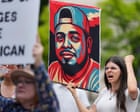
In recent times, the world has been gripped by significant developments in both human rights and child safety. These issues, affecting diverse regions and communities, highlight the ongoing global commitment to ensuring safety and justice for all.
In El Salvador, serious allegations have emerged regarding the treatment of detainees in one of the country’s most notorious prisons, specifically the Terrorism Confinement Center, commonly known as Cecot. Kilmar Ábrego García, a Maryland resident wrongfully deported and detained there, was reportedly subjected to physical and psychological torture according to new court documents. These allegations shed light on the conditions within Cecot, where Ábrego García and other detainees reportedly endured prolonged periods of being forced to kneel, demonstrating the urgent need for scrutiny and reform of such detention facilities to uphold basic human rights.
On another front, the Australian government is taking decisive action to enhance child safety across the nation’s childcare sector. Recent allegations of misconduct at childcare centers have prompted the federal government to expedite legislation that aims to enforce stricter safety standards. This legislative change will empower authorities to cut funding to centers failing to comply with these standards, reinforcing a zero-tolerance policy towards any negligence or abuse. Complementing this legislative push, the Victorian government has appointed former South Australian Premier Jay Weatherill and senior bureaucrat Pamela White to conduct an urgent review of childcare safety practices. This proactive approach reflects the widespread acknowledgment of the crucial responsibility to protect children and maintain the integrity of care environments.
In support of these institutional measures, there is also a growing dialogue on empowering parents and caregivers with the right tools to discuss body safety with children. Experts emphasize the importance of equipping young ones with the appropriate language to express themselves, and the courage to communicate if something feels amiss. This educational effort is integral to creating a safer environment where children feel confident to voice their concerns.
Together, these developments illustrate a coordinated effort at various levels of society to prioritize human rights and child safety. From addressing systemic issues within detention facilities to fortifying childcare regulations, the emphasis remains on fostering secure and just environments for all individuals, particularly the most vulnerable.
As these efforts continue to evolve, the collective aim is to set a precedent both nationally and globally, ensuring that protection and human rights are at the forefront of societal standards. By remaining vigilant and responsive to issues as they arise, governments, institutions, and communities can work collaboratively towards a future where safety and dignity are universally respected and upheld for every person. These unified actions serve as a testament to the enduring resolve to create a world where everyone can thrive without fear of harm or injustice.
Source: {link}
